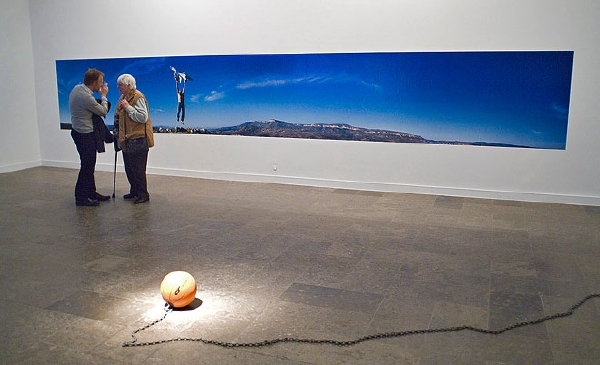http://www.aptglobal.org/view/artist.asp?ID=4844
Born in 1977 in Karachaevsk, Russia; lives and works in Istanbul, Turkey.
Borlakov's photographs depict cultural traditions and recognizable scenarios with a twist. Each series proposes its own overriding connections and themes and all his works share in their composition the desire to stress the perception of time and space. In his recent Panorama series of seven photographs the scenery is magnificent. The scale and drama that make up the vista of crags, crevices and clouds is breathtaking. Yet these panoramas are simply a stage for one moment, or as Borlakov describes it 'one sentence' in any number of stories. Shot in the Caucasus Mountains in Russia near the Georgian border, the composition of the land is strikingly different in each photograph, as are the acts these backdrops both conceal and reveal. In the corner of one image, two men batter something with a rock; in another, a bundle is thrown from the trunk of a car; in the next, a man is elevated by two white geese; eight women walk in line across a plateau; uniformed men undress; a group of boys stand tentatively looking over a cliff edge. The imagination runs riot. Amidst this awesome sweep of nature, even the most microscopic human presence demands explanation, a before and after. Is the body from the car the same one that was beaten and is here being pulled back to be identified?
In a place of Greek legend, the mountains where Prometheus was chained to a rock, myths are easily born and tales of the immortal, heroes and tortured souls can be infinitely cited. So while Biblical imagery (a pilgrimage, a crucifixion and resurrection) appear obvious in their implication, references to political turmoil, corruption and racial hatred can just as easily be applied. In the end, Borlakov's works reference all and none of these sources, allowing the viewer to ultimately decide which story they prefer.

© Photo: Roman Mensing / artdoc.de